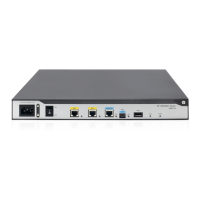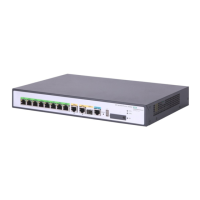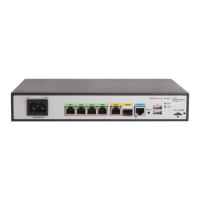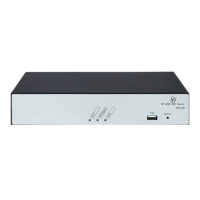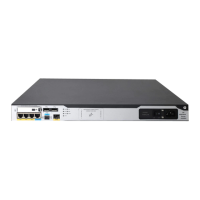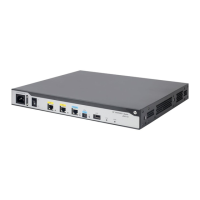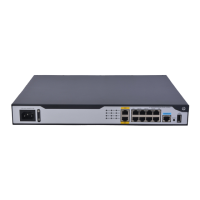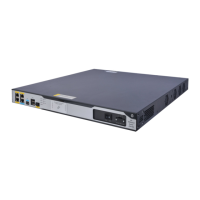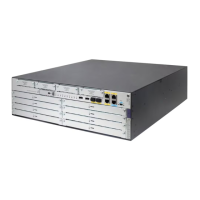Step Command Remarks
1. Enter system view.
system-view N/A
2. Enter T1-F interface view.
interface serial interface-number N/A
3. Start a BERT test.
ft1 bert pattern { 2^20 | 2^15 }
time minutes [ unframed ]
By default, no BERT test is
performed.
4. (Optional.) Verify the state
and result of the BERT test.
display ft1 [ serial
interface-number ]
N/A
Displaying and maintaining T1-F interfaces
Execute display commands in any view and reset commands in user view.
Task Command
Display information about T1-F interfaces. display ft1 [ serial interface-number ]
Display the status of a T1-F interface. display interface serial interface-number
Clear statistics for T1-F interfaces. reset counters interface [ serial [ interface-number ] ]
Configuring a CE3 interface
E3 belongs to the digital carrier system of ITU-T. It transmits data at 34.368 Mbps and adopts HDB3 as
the line code format.
A CE3 interface can operate in either E3 or CE3 (the default) mode.
• In E3 mode, a CE3 interface provides 34.368 Mbps of data bandwidth. No timeslots are divided.
The system automatically creates a synchronous serial interface numbered serial
number/line-number/0:0 for it.
• In CE3 mode, a CE3 interface can demultiplex 16 channels of E1 signals in compliance with ITU-T
G.751 and G.742. Each E1 line can be divided into 32 timeslots numbered 0 to 31. Timeslot 0 is for
framing signal transmission and does not support bundling. All other timeslots can be randomly
bundled into n × 64 kbps channels, where n is the number of bundled timeslots.
A CE3 interface can be channelized into E1 lines in framed mode or unframed mode.
{ When an E1 line is operating in unframed (E1) mode, the system automatically creates a
2048-kbps synchronous serial interface numbered serial number/line-number:0 for it.
{ When the E1 line is operating in framed (CE1) mode, you can bundle timeslots on it. For each
channel set, the system automatically creates a synchronous serial interface numbered serial
number/line-number:set-number. The interface rate is n × 64 kbps, where n is the number of
bundled timeslots.
• The synchronous serial interface created in either mode has the same logical features as a standard
synchronous serial interface. You can configure this interface in the same way you configure a
standard synchronous serial interface.
33
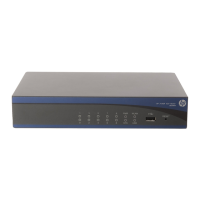
